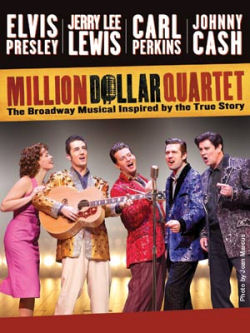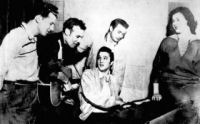 Way back in 1984, columnist Art Buchwald wrote a piece on the insurance industry that has always struck with me. It began as follows (you can read the whole piece here):
Way back in 1984, columnist Art Buchwald wrote a piece on the insurance industry that has always struck with me. It began as follows (you can read the whole piece here):
I’m not a betting man by nature, but I have this bookmaker. He works for the Reluctant Insurance Company of America. This is how we bet. Every month I give him a certain amount of money, and he takes a gamble that my house won’t burn down or be broken into or damaged by a falling tree. Another bet I place with him is that my car won’t hit someone in an accident, or I won’t be hit by somebody else. Still a third one is that my family will not be stricken with an illness that will require hospitalization.
Funny enough, I was never anxious to win one of those bets. I didn’t want to collect from the bookie on any of them. He seemed to feel the same way I did. So much so that if, for some reason, I forgot to send him a check for one of our bets, he would mail me a nasty letter wanting to know where the money was. He was not, he told me, in the bookmaking business for his health.
Recently, due to an illness in my family, my bookie lost one of my bets. Since this was the first time I had won, I thought he would be happy to pay off. After all, even in Las Vegas the house expects to lose once in a while.
You can guess where the piece goes from there, with the bookie refusing to pay out, and even threatening to break his legs.
Thinking about insurance as legalized gambling is very instructive. Currently, we’re in a situation where a lot of people have employer-subsidized casinos where they can gamble. These casinos pay very well, but they are open only to the employees. They are like credit unions: they know their community, and they pay very well.
Those who aren’t so lucky to have employer-subsidized casinos have a problem. Playing at the other casinos are very expensive, and some of them are quite shady. Some of them have really bad odds: they collect in lots of money, and pay out an extremely small percentage, with the rest going to the mob bosses that control the casino. Others only allow you to gamble if they know you will lose; if you have ever won before, they do not permit you to play the game because their oddsmakers tell them that if you have won once, you’re going to win again. Further, there are a group of players that only want to go into the casino when they know they will have a winning streak. When their luck is cold, they avoid the casinos. Casinos could not stay in business very long if the house regularly lost; it depends on the balance of winners to losers.
Let’s now translate the above into the affordable care act, often called “Obamacare”. One thing Obamacare does is mandate that the house pay a certain percentage to the winner, and not to the mob bosses — in other words, that a significant portion of premiums (I think 80%) must go to medial payments, not administrative costs. Obamacare also mandates that individuals who have ever “won” can continue playing — in other words, that individuals with preexisting conditions must be able to get coverage. It also mandates that the casinos must pay out when people win — in other words, that when you get sick, the insurance companies cannot retroactively drop your insurance. It also mandates that players just learning the game can come in the casino with their parents — in other words, that children who are unlikely to get sick must be covered under their parent’s policies. All off these have the potential to cost the casino money. To counter this and balance the system, Obamacare mandates that people cannot play only when they know they will win — in other words, that people must get health insurance when they are young and healthy. This is the basis of the “individual mandate”: to provide incentives for people who do not carry insurance to carry insurance, and those premiums offset the additional coverage costs.
Now, Obamacare recognizes that not all players have the same ability to gamble. For those that have the ability, they have the choice: they can regularly gamble and lose, or they can pay a fee (lower than their gambling costs) for not playing (this is the tax that the Supreme Court just ruled as legal). For those that can’t afford to play at all, the government will provide the casino and pay for them to play — this corresponds to Medicare and similar programs. For those that can barely afford to play, the government will provide subsidies to help them play — in other words, low income people can get financial support on buying insurance. Lastly, the government will maintain a list of available casinos (the “registries”) that tell people the best places for them to play; it is the states that have the option of setting up state-run casinos for those that can’t find anyway to play.
Continuing the analogy: Does the government dictate when people can win and when they lose: in other words, are there “death squads”. In the government run casinos, yes — but this is what we have today with Medicare dictating what they will cover (in other words, this isn’t new). For private-run casinos, only partially. The government does dictate some cases where the people can win — that is, coverage that must be provided. The government, with some exceptions, does not dictate when people lose (i.e., when things aren’t covered). That’s up to the private insurers (oops, casinos). The exception: abortion, and this restriction came not from Obama but from the Conservatives in government.
So there you have it. Insurance is legalized gambling. The individual mandate is simply a way to get more people into the casino so that the casino operators can afford to let more people play and have better payouts.


 One of the unfortunate side effects of the recent RIF at the Circle A Ranch was that I became the operator of our vanpool (as one of the folks RIFed was the longtime operator; we also lost Nicole as a regular rider). This brought our vanpool down to 6 regulars and one regular casual (3 days a month) in an 8 passenger van. [As background,
One of the unfortunate side effects of the recent RIF at the Circle A Ranch was that I became the operator of our vanpool (as one of the folks RIFed was the longtime operator; we also lost Nicole as a regular rider). This brought our vanpool down to 6 regulars and one regular casual (3 days a month) in an 8 passenger van. [As background,  A number of news items in today’s lunchtime news reading address transportation in some form:
A number of news items in today’s lunchtime news reading address transportation in some form: The recent newspapers (or their electronic equivalent) have brought some interesting news about reuse about stuff that had become useless:
The recent newspapers (or their electronic equivalent) have brought some interesting news about reuse about stuff that had become useless: While perusing my RSS feeds, my eyes lit upon the announcement of
While perusing my RSS feeds, my eyes lit upon the announcement of  As I was walking back from grabbing my lunch in the cafeteria, Mitt Romney was on the TV there, talking about how he will get rid of Obamacare on Day 1. That made me realize: I know what Mitt Romney is against (pretty much anything Obama), but I don’t know what he favors. For example:
As I was walking back from grabbing my lunch in the cafeteria, Mitt Romney was on the TV there, talking about how he will get rid of Obamacare on Day 1. That made me realize: I know what Mitt Romney is against (pretty much anything Obama), but I don’t know what he favors. For example: Last night, my wife asked me to sit down and watch a program with her. This wasn’t a surprise; she actually likes to sit with me sometimes :-). Nor was it a surprise when it turned out to be “The Trouble with Tribbles”, an episode of the original Star Trek. She likes old TV program. What was a surprise was the channel: 20, ME-TV. Now we have DirecTV, and a channel under 100 is a local channel. I had never heard of ME-TV, nor did I know of any channel 20 in the Los Angeles area. So I started investigating.
Last night, my wife asked me to sit down and watch a program with her. This wasn’t a surprise; she actually likes to sit with me sometimes :-). Nor was it a surprise when it turned out to be “The Trouble with Tribbles”, an episode of the original Star Trek. She likes old TV program. What was a surprise was the channel: 20, ME-TV. Now we have DirecTV, and a channel under 100 is a local channel. I had never heard of ME-TV, nor did I know of any channel 20 in the Los Angeles area. So I started investigating.
 Last night, I went to a rockin’ jam session at one of the oddest of places: The Pantages Theatre. Perhaps I should explain. On Tuesday December 4, 1956 in the Sun Record Studios in Memphis, Tennessee there was an impromptu jam session between
Last night, I went to a rockin’ jam session at one of the oddest of places: The Pantages Theatre. Perhaps I should explain. On Tuesday December 4, 1956 in the Sun Record Studios in Memphis, Tennessee there was an impromptu jam session between 